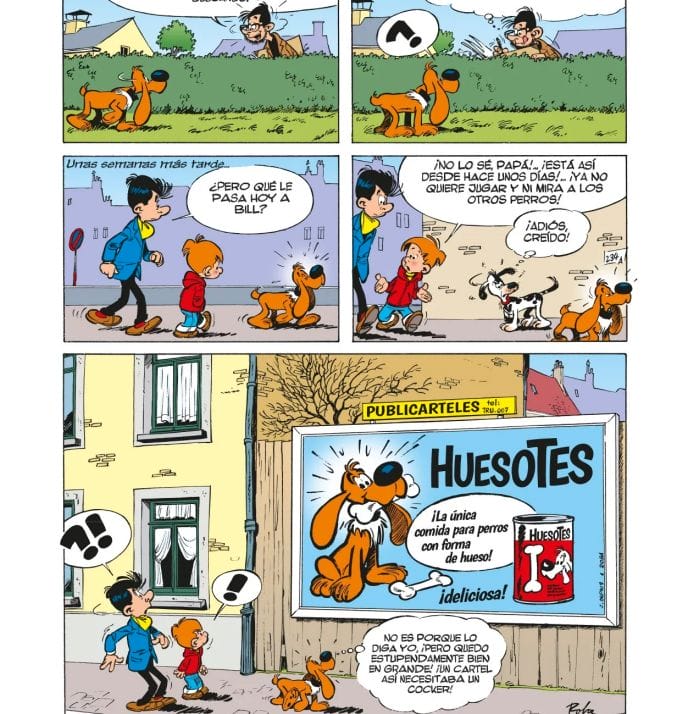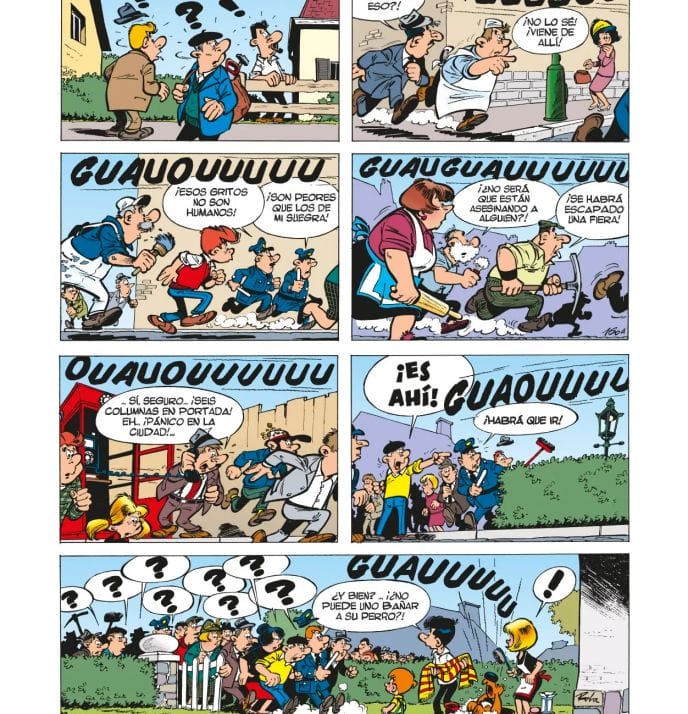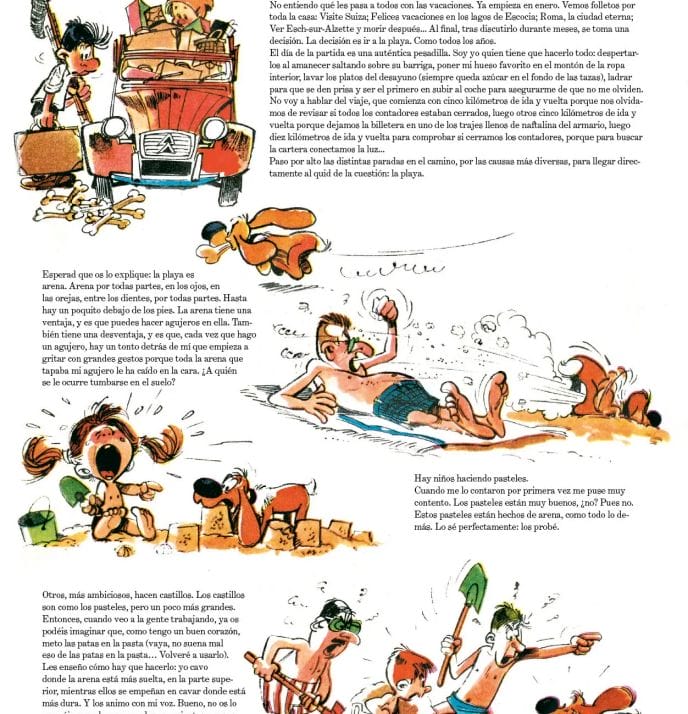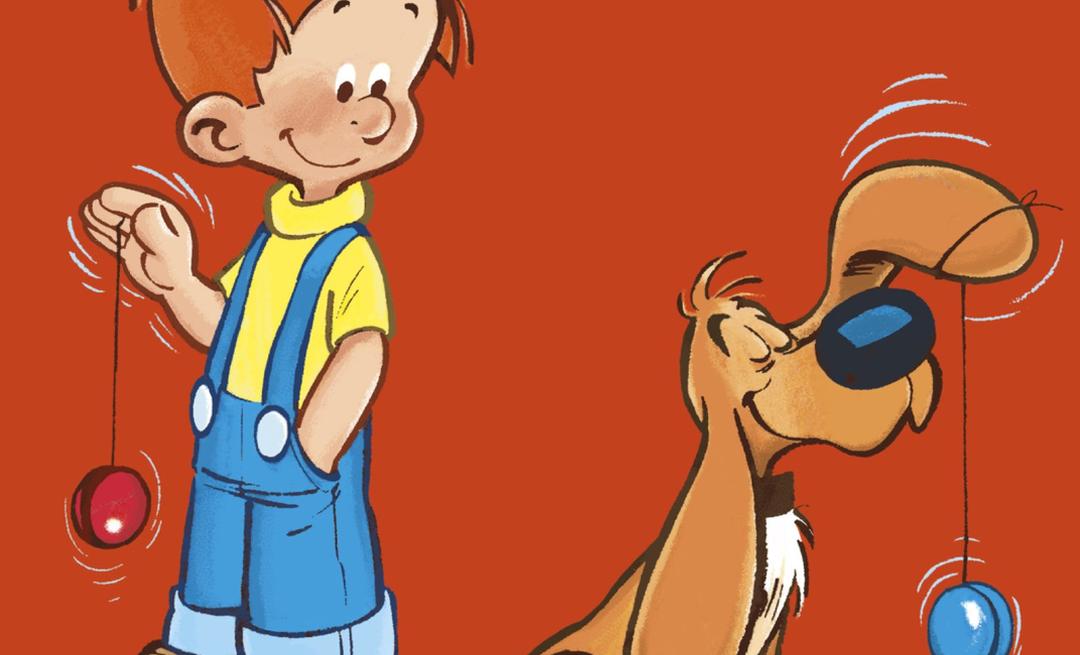Editorial Dolmen brings together a new episode of this popular series, originally published in ‘Le Journal de Spirou’, in its line ‘Outboard’.
“This idea is not enough for 50 jokes,” your editor roared. Le Journal de SpirouWhen Charles Dupuis receives the offer that Jean Roba gave him: a series of short comics filled with white and naive humor, a charming boy and his puppy.. Fortunately for comic readers, this massive historical myopia of Dupuis was quickly corrected by the legendary André Franquin, who made Roba a collaborator in the adventures of Spirou and Fantasio, commissioned by Le Parisien Libéré. During the two years working with Franquin, he gained experience as a draftsman and worked on a project he loved very much. bill and ballthis would eventually become one of Le Journal de Spirou’s most famous books, at 1149 pages.
This is the second part bill and ballarranged in line outboard motor Dolmen Editorial collects the golden years of the most famous Roba creation, with juicy additional information. In the comics between 1963 and 1967, the Belgian artist had already perfected his style, preferring simplicity in structure – usually eight vignettes per page, but sometimes opting for a horizontal format for the final vignette, if the joke deserves it) – and this visual component took precedence over the textual one. Dialogues are more agile and shorter because Roba never hid his intention to address the general public. The stories collected in this collection are a pure celebration of the practice of synthesis, the radiance of creativity, cutting everything else out for the sake of jokes. As Roba says, “Less is more”.

In one of these one-page stories – Roba adapted the North American comic format to features of Franco-Belgian comics – Bill also mysteriously escapes from home, largely to the despair of his owners. In the final panel, it is revealed that the dog breed theater went in search of the canine star. In another story, he takes the law into his own hands with the owner of a biscuit brand he finds inedible. In a third instance, he is sitting on the other side of the wall, drooling while listening to the ingredients of a delicious menu being read, but later discovers that the sound is coming from the old transistor a homeless man is listening to. until.
Roba’s opponents have always blamed him for giving an overly watered-down view of reality that did not fit the social and economic changes that took place in the 1960s. Anyways, In context, this study is much more painful than it seems.. bill and ball It is an outstanding autobiographical work. Bolita is a graphic representation of his son Philippe, affectionately known as Boule, while Bill has the characteristics of a wonderful animal lover, the seven cockerels owned by the cartoonist’s family. Roba also didn’t hesitate to incorporate traits of his own personality into the father of the family or pay tribute to his wife Loulou, the pattern Bolita created for her mother. Roba has always pursued happiness at home as a fundamental achievement. But in 1959, his peaceful family life—his comfortable position, happiness, and shared love—was lost when Loulou was diagnosed with multiple sclerosis. Since that moment, became obsessed with recreating it in his vignettes bill and ball to the perfect family as an outlet for personal problems, as if it were possible to summarize the moments when everything was perfect and will never come back.

Understanding that the vignette doesn’t have to reflect real life, but rather makes it more bearable, Roba has always advocated the use of humor. bill and ballmakes an occasional overtext joke about. In one of the stories, Bolita asks his dog to act serious, fed up with the feast of funny faces. At that moment, Roba draws her animal completely realistically, which causes it to immediately lose its charm. In this brilliant way, the cartoonist defended himself against the apostles of serious art. Over the years, he would add up-to-date elements to the idealized world he portrayed, like a cute nod to Beatles haircuts or unintentional jokes about pop stars of the moment like Antoine, and he would partly give up.
The reader unfamiliar with the work may find it a bit odd that Bill’s name appears in the title before the owner’s. In comics recorded during the time he curated here, the dog is the main character—often the camera is highest—and Humor jokes often arise from a clash of expectations between what is expected of a pet and its destructive behavior.. Bolita does not express himself as a human, although he occasionally breaks the fourth wall, but has an excellent ability to generate logical thoughts. Rob avoids the tendency to over-humanize him. He attributes to him the behavioral traits characteristic of roosters – intelligent, extremely loyal to his family, but very stubborn – even though his canine nature sometimes betrays him and he loses his temper every time he hears the word “cat”. Except for the family core, the other characters in the neighborhood where the story takes place are only vehicles that pave the way for the final blow.
This review also features some of the great collaborations between Boba and the magazine’s eccentric editor-in-chief. Le Journal de SpirouYvan Delportand; Pages of flowery prose that manage to undercut the family dynamics and add a wonderful lyric to the comics. One describes how vacations at the beach are viewed from a dog’s point of view. Another story tells of a comical correspondence between Bolita and his parents and merchants who were affected by the little one’s misfortune. As with the rest of the material in the volume, These little pills are still the best antidote to bring back the grayest days..


